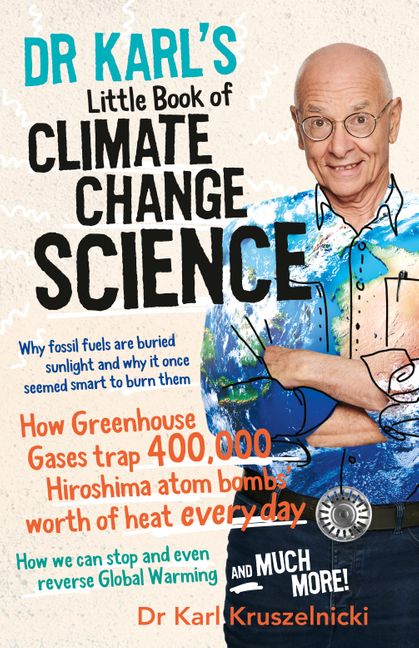Report on Food System Transformation for Sustainable Development Goal Attainment
Introduction: The Imperative for Dietary Change
A new analysis published in Scientific Reports underscores the critical need for a rapid global transition away from animal-based agriculture to meet international climate targets and advance the Sustainable Development Goals (SDGs). The current food system, particularly meat and dairy production, is a primary driver of greenhouse gas emissions, directly threatening the achievement of SDG 13 (Climate Action). This report outlines the study’s findings, emphasizing the urgency of shifting to alternative proteins to support a sustainable future aligned with the 2030 Agenda.
Climate Impact of Current Food Production and Consumption
Exceeding the Planetary Carbon Budget
The global food system’s environmental footprint poses a significant barrier to sustainable development. Its impact is a direct challenge to SDG 13 (Climate Action) and has cascading effects on other goals.
- Greenhouse Gas Emissions: Food systems account for approximately one-third of all anthropogenic GHG emissions. Key sources include methane from livestock, nitrous oxide from fertilizers, and carbon dioxide from deforestation driven by land clearing for grazing.
- Carbon Budget Breach: To limit global warming to 1.5°C, the food system must remain within a carbon budget of 390 gigatons of CO₂ equivalent (GTCO₂e) through 2050.
- Unsustainable Trajectory: Under a business-as-usual scenario, cumulative food system emissions are projected to reach 607 GTCO₂e, far exceeding the threshold required to prevent catastrophic climate impacts.
The Urgency of Dietary Transition Scenarios
The window for meaningful action is closing rapidly. The study presents stark scenarios based on the timing of a global dietary shift.
- Immediate Action Scenario: If a global transition toward alternative proteins began before 2023, a 60% replacement of animal-sourced foods by 2050 would be sufficient to stay within the carbon budget.
- Delayed Action Scenario: If this transition is delayed until 2026, a complete, 100% replacement of all meat and dairy products with alternatives would be required by 2050 to meet the same climate target.
These findings indicate that delays will necessitate far more drastic and potentially disruptive changes to global food systems, jeopardizing progress on SDG 2 (Zero Hunger) and SDG 12 (Responsible Consumption and Production).
Strategic Levers for Transformation: Aligning with Multiple SDGs
Alternative Proteins as a Key Innovation (SDG 9)
The development and scaling of alternative proteins, including plant-based and cultivated meat, are identified as a primary solution. This strategy aligns with SDG 9 (Industry, Innovation, and Infrastructure) by fostering a new, sustainable food technology sector.
- Emission Reduction: A large-scale switch to alternative proteins could reduce food system emissions by up to 33%, primarily by mitigating potent, short-lived GHGs like methane. This provides an “emergency brake” for climate change, supporting SDG 13.
- Resource Efficiency: By reducing the demand for animal agriculture, this shift would alleviate pressure on land and water resources, contributing to the protection of ecosystems under SDG 15 (Life on Land) and enhancing global food security as outlined in SDG 2.
Challenges in Responsible Consumption and Production (SDG 12)
Despite the potential of alternatives, current consumption patterns are not aligned with sustainability goals. Global meat consumption is projected to rise, and adoption of alternatives in high-consumption nations remains slow.
- In the U.S., only 11% of consumers report actively reducing meat intake.
- Barriers to adoption include the price, taste, and accessibility of alternative products.
- Achieving SDG 12 requires a fundamental shift in consumer behavior, supported by market-ready products that can compete with conventional meat and dairy.
Integrated Solutions and Policy Recommendations
A “Solar Moment” for Food Technology (SDG 17)
To overcome these challenges, the report calls for a concerted effort similar to the one that scaled the renewable energy sector. This requires robust partnerships between governments, the private sector, and civil society, in line with SDG 17 (Partnerships for the Goals).
- Significant public and private investment is needed to improve the quality and reduce the cost of alternative proteins.
- Strong regulatory frameworks are essential to ensure the safety and scalability of new food technologies like cultivated meat.
Complementary Strategies and Recommendations
While dietary change is paramount, an integrated approach is necessary. Addressing food waste, which accounts for 7% of global GHG emissions, is a critical component of achieving SDG 12.3 (halve per capita global food waste). Furthermore, promoting frameworks like the EAT-Lancet “Planetary Health Diet” supports both environmental goals and SDG 3 (Good Health and Well-being).
Recommendations for Action:
- Integrate Food Systems into Climate Policy: National governments must incorporate targets for dietary change and agricultural emissions reduction into their climate action plans under the Paris Agreement.
- Incentivize Innovation: Provide substantial public funding and private investment to accelerate research, development, and commercialization of alternative proteins.
- Raise Public Awareness: Launch educational campaigns to inform consumers about the links between diet, health, and climate change to drive demand for sustainable options.
- Reduce Food Waste: Implement policies and infrastructure to significantly cut food loss and waste across the supply chain.
Without immediate and decisive intervention across these areas, the global community risks failing to meet critical Sustainable Development Goals, particularly those related to climate, biodiversity, and responsible consumption.
Relevant Sustainable Development Goals (SDGs)
-
SDG 13: Climate Action
- The article’s central theme is the urgent need to reduce food-related greenhouse gas emissions to combat climate change. It explicitly discusses the food system’s carbon budget, the goal of keeping global warming below 1.5°C as set by the Paris Climate Agreement, and the role of methane from cattle in driving climate change.
-
SDG 12: Responsible Consumption and Production
- The article focuses on changing consumption patterns, specifically by reducing meat and dairy intake and shifting to alternatives like plant-based proteins. It discusses consumer behavior, such as the percentage of Americans trying and adopting these alternatives, and highlights the issue of food waste, which constitutes 7% of global greenhouse gas emissions.
-
SDG 15: Life on Land
- The article directly links the current food system to terrestrial ecosystems by stating that “Livestock grazing is also a major driver of deforestation.” Reducing meat consumption, as advocated in the text, would directly address this pressure on forests and land.
Specific SDG Targets
-
SDG 13: Climate Action
-
Target 13.2: Integrate climate change measures into national policies, strategies and planning.
- The article supports this target by calling for “strong regulatory frameworks and both public and private investments” to scale up alternative proteins, comparing it to the government support that grew the renewable energy sector. This implies a need for policy-level intervention to manage the food system’s climate impact.
-
Target 13.2: Integrate climate change measures into national policies, strategies and planning.
-
SDG 12: Responsible Consumption and Production
-
Target 12.2: By 2030, achieve the sustainable management and efficient use of natural resources.
- The article’s entire premise of replacing resource-intensive animal products with more efficient alternatives like plant-based foods directly aligns with this target. It highlights that meat and dairy “emit far more greenhouse gases than beans and lentils.”
-
Target 12.3: By 2030, halve per capita global food waste at the retail and consumer levels and reduce food losses along production and supply chains, including post-harvest losses.
- This target is explicitly referenced when the article states that “cutting [food waste] in half would free up a significant portion of the carbon budget.”
-
Target 12.8: By 2030, ensure that people everywhere have the relevant information and awareness for sustainable development and lifestyles in harmony with nature.
- The article emphasizes this by quoting an expert who says, “Raising awareness is key to encouraging the adoption of meat and dairy alternatives… It’s a very important lever for climate action.”
-
Target 12.2: By 2030, achieve the sustainable management and efficient use of natural resources.
-
SDG 15: Life on Land
-
Target 15.2: By 2020, promote the implementation of sustainable management of all types of forests, halt deforestation, restore degraded forests and substantially increase afforestation and reforestation globally.
- The article connects to this target by identifying livestock grazing as a “major driver of deforestation.” The proposed dietary shifts would reduce the demand for grazing land, thereby helping to halt deforestation.
-
Target 15.2: By 2020, promote the implementation of sustainable management of all types of forests, halt deforestation, restore degraded forests and substantially increase afforestation and reforestation globally.
Indicators for Measuring Progress
-
Indicators for SDG 13 (Climate Action)
- Greenhouse gas emissions from the food system: The article specifies that the food system accounts for “one-third of the global greenhouse gas emissions” and must stay within a “carbon budget… of 390 GTCO₂e through 2050.”
- Global average temperature increase: The article repeatedly refers to the goal of keeping warming “below 1.5°C” and the projection that this threshold is likely to be surpassed between 2025 and 2029.
-
Indicators for SDG 12 (Responsible Consumption and Production)
- Percentage of animal-based foods replaced by alternatives: The study cited suggests a target of replacing “60 percent of animal-based foods… by 2050.”
- Per capita meat consumption: The article notes that global per capita consumption of meat is expected to “rise by six percent by 2034” and that some “wealthier countries are eating less meat.”
- Consumer adoption of meat alternatives: Specific data points are provided, such as “40 percent of Americans tried plant-based meat in 2024,” but only “11 percent of Americans reported reducing their meat intake.”
- Proportion of food waste: The article states that “food waste makes up seven percent of greenhouse gas emissions globally.”
-
Indicators for SDG 15 (Life on Land)
- Rate of deforestation caused by agriculture: This is implied when the article states that “Livestock grazing is also a major driver of deforestation.” Measuring the reduction in this rate would be a key indicator of progress.
Summary of SDGs, Targets, and Indicators
| SDGs | Targets | Indicators |
|---|---|---|
| SDG 13: Climate Action | 13.2: Integrate climate change measures into national policies, strategies and planning. |
|
| SDG 12: Responsible Consumption and Production |
12.2: Achieve the sustainable management and efficient use of natural resources.
12.3: Halve per capita global food waste. 12.8: Ensure people have information for sustainable lifestyles. |
|
| SDG 15: Life on Land | 15.2: Halt deforestation. |
|
Source: sentientmedia.org






